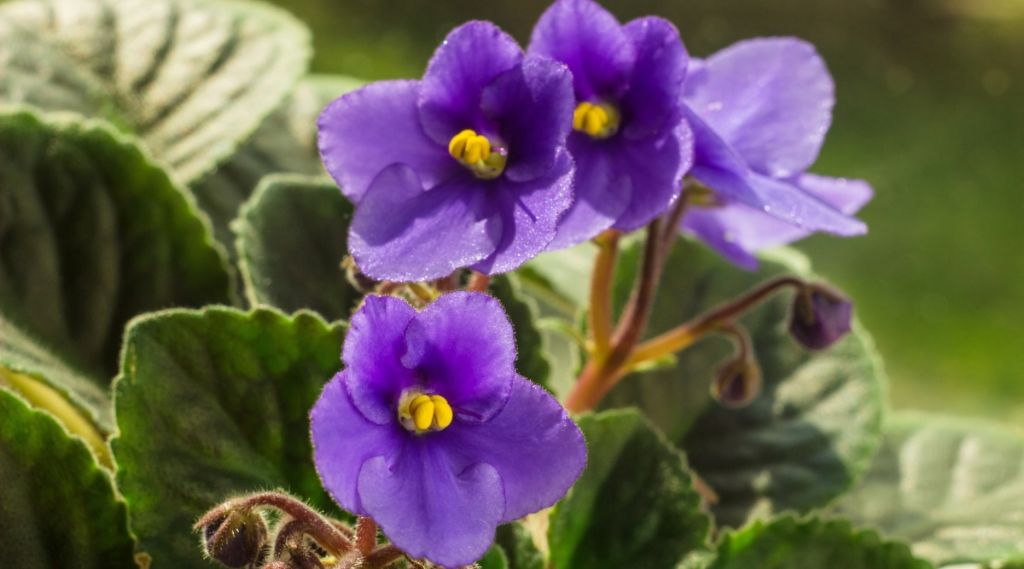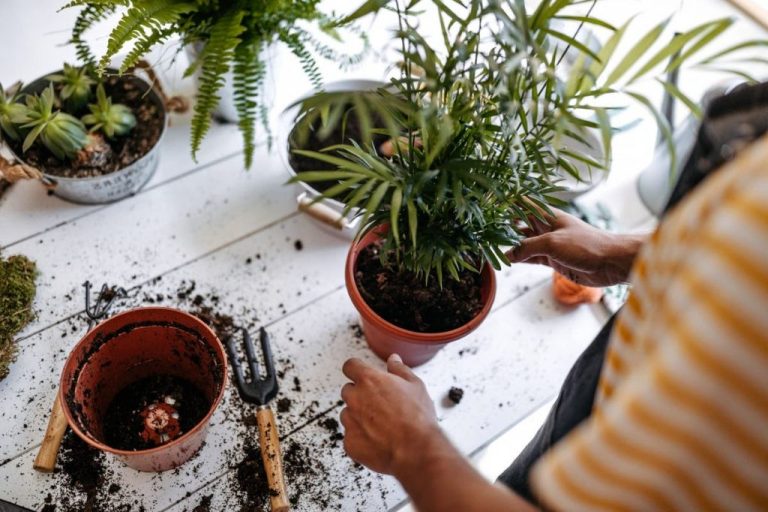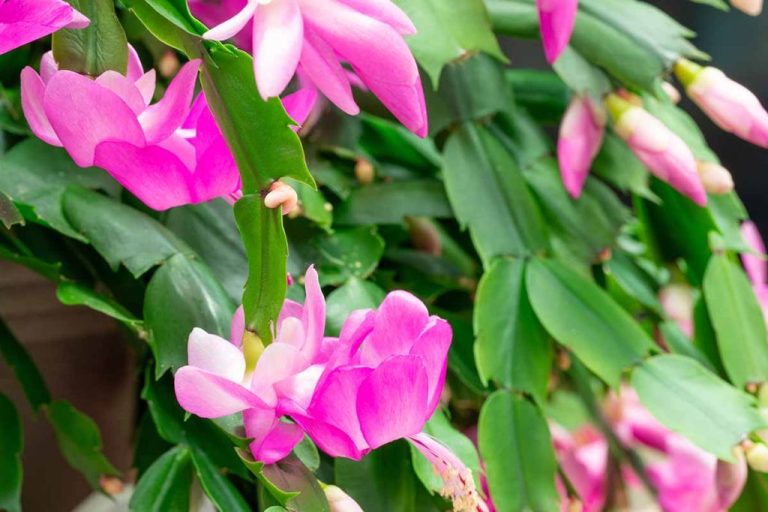Expert Tips For Caring For African Violet Plants
African violets (Saintpaulia) are a popular flowering houseplant native to Tanzania and Kenya. First discovered in the late 1800s, African violets were brought to Europe and the United States in the early 20th century and quickly gained popularity as houseplants due to their beautiful flowers and relatively easy care requirements. While they have a reputation for being somewhat finicky, African violets can thrive indoors with proper care and conditions.
This guide will provide tips on how to successfully grow healthy African violet plants and keep them blooming. Key aspects of African violet care that will be covered include choosing the right pot, using the proper soil mix, watering and fertilizing properly, providing adequate light, maintaining ideal temperature and humidity levels, when to repot, and how to propagate new plants.
Choosing the Right Pot
The pot you choose for your African violet is crucial for proper drainage and healthy roots. Here are some key things to consider when selecting a pot:
Drainage
Good drainage is essential. The pot should have 6-12 holes evenly spaced across the bottom to allow excess water to drain away readily (https://africanviolets.com.au/african-violet-pots/). This prevents soggy soil and root rot.
Material
Terra cotta and plastic pots both work well. Terra cotta is breathable while plastic helps retain moisture longer. Avoid pots that retain too much moisture like glass, glazed ceramics, or metal (https://www.houseofhawthornes.com/african-violet-care/).
Size
Choose a pot that’s about an inch wider than the current root ball. African violets like being pot-bound but avoid going too small. Allow a little room for growth each time you repot.
Soil Mix
Using the right soil mix is crucial for growing healthy African violet plants. The ideal soil mix is loose, well-drained, and slightly acidic. African violets require a soil less that is less dense than regular potting mix.
The basic ingredients for an African violet potting mix are:
- Peat moss – helps retain moisture and provide aeration
- Perlite or vermiculite – improves drainage
- Compost or leaf mold – provides nutrients
- Sharp sand – creates loose, well-draining mix
A good recipe is two parts peat moss, one part perlite or vermiculite, and one part leaf mold or compost. Mix thoroughly and adjust ingredients to achieve an airy, loose consistency. Some gardeners recommend adding pH adjusters like limestone to lower acidity.
You can purchase pre-made African violet soil, but mixing your own allows you to control the ingredients and consistency. According to The Best Soil Mix for African Violets, adding peat moss or coco coir helps lower pH.
Watering
African violets need to be watered regularly, but care should be taken not to overwater them. The frequency of watering depends on factors like temperature, light levels, humidity, size of pot, and soil mixture.
As a general rule, water African violets when the top 1-2 inches of soil becomes dry to the touch. Avoid allowing the soil to completely dry out between waterings. Depending on conditions, this may mean watering 1-2 times per week during the growing season.1
When watering, add enough room temperature water so it runs freely through the drainage holes, but don’t allow the plant to sit in water. Empty any accumulated water in the saucer promptly after watering. Warm or cold water can shock the roots, so aim for water temperatures between 65-80°F.
The quality and chemical composition of the water is also important. Avoid using hard water high in minerals and salts, which can build up in the soil over time. Filtered, distilled, or rain water is ideal. Let tap water sit out overnight before using to allow chlorine to dissipate.
Fertilizing
African violets need fertilizer to thrive, but it’s important not to over-fertilize. The best fertilizer for African violets is one specially formulated for them, with an N-P-K ratio around 14-12-14 or 20-10-20. These provide higher phosphorus to promote blooming. Look for a water-soluble, urea-free fertilizer made for African violets or orchids. Popular options include Miracle-Gro African Violet Food and Schultz All Purpose Plant Food Plus for African Violets.
Dilute the fertilizer to half or quarter strength before applying. Fertilize monthly during the active growing period, and every 2-3 months in winter when growth slows. To fertilize, thoroughly water the plant first, then add the diluted fertilizer to the drainage tray so the plant can absorb it through the drainage hole. Never apply fertilizer to dry soil or directly on the leaves, as this risks fertilizer burn.
Some gardeners make homemade fertilizers, like compost tea, to fertilize African violets. But it can be challenging to get the formula right at home. It’s generally best to use an off-the-shelf fertilizer made specifically for African violets.
Light

African violets thrive in bright, filtered light. Direct sunlight can scorch their leaves, so it’s best to place them near an east or west facing window where they’ll receive gentle morning or evening sun. If keeping them indoors, aim for 10-12 hours of bright, indirect light per day.
Fluorescent or LED grow lights work well if natural light is insufficient. Place the grow lights 6-12 inches above the plant and set a timer for 12-14 hours per day. Rotate the plant periodically so all sides receive equal light exposure. Avoid setting violets too close to intense grow lights as the leaves can burn.
Insufficient light will cause African violets to become leggy and less floriferous. Gradually increase light levels if your plant is showing these symptoms. With the right lighting conditions, you can enjoy continuous blooms. Refer to this helpful guide from Repotme on African Violet Light Requirements for optimal lighting.
Temperature & Humidity
African violets thrive in temperatures between 65-80°F (18-27°C). Ideal humidity levels are around 75% (source). Higher humidity encourages larger leaves and more robust flowering. Lower humidity can lead to browning leaf tips and edges.
Monitor your home’s temperature and humidity levels. Place violets away from drafty windows, heat vents, or direct sun which can cause temperature fluctuations. Use a hygrometer to track humidity. Misting leaves daily or placing plants on pebble trays with water can boost humidity. Reduce watering slightly in higher humidity environments to avoid root rot.
During winter when home heating dries the air, run a humidifier nearby violets. In summer, airflow from a fan can prevent leaves from scorching when temperatures rise. Keep violets comfortable year-round by making adjustments as needed.
Repotting
African violets should be repotted about every 1-2 years to provide fresh soil and room for new growth. It’s best to repot in the spring, as this is the beginning of the active growing season.
When repotting, carefully remove the plant from its old pot and gently loosen the root ball. Prune off any dead or damaged leaves. Select a pot that is about 1-2 inches larger than the current pot. Make sure the pot has drainage holes. Repot into fresh, sterile potting mix made for African violets. Firm the soil gently and water thoroughly after repotting.
The repotting process stimulates new root growth. Provide bright, indirect light while the plant establishes itself in its new pot. Fertilize monthly once new growth appears after repotting. With proper repotting, African violets will continue to thrive and produce vibrant blooms.
Sources:
https://www.ruralsprout.com/repot-african-violets/
https://creativehomemaking.com/gardening/houseplants/repotting-african-violets/
Propagation
There are a few different methods to propagate African violets including leaf cuttings, crown cuttings, and by dividing the plant. Leaf cuttings are the easiest and most common way to propagate. Simply remove a healthy leaf from the mother plant, leaving about an inch of the leaf stem attached. Insert the leaf into moistpropagation mix so the stem is buried. African violet leaves produce babyplantlets right from the stem, and roots will form within a few weeks (Rural Sprout). The optimal time is during spring and summer when plants are actively growing. However, propagation can be done year-round (Better Homes & Gardens). Within 4-6 months the baby African violet should be large enough to remove and pot up.
Crown cuttings can also be taken by removing a rosette and small portion of stem from the mother plant. This is often done to rejuvenate overgrown plants. Dividing African violets is done by gently breaking the root ball apart and potting up sections that have some roots and leaves attached.
Troubleshooting Common Issues
African violets are lovely plants but can develop issues. Here are some of the most common problems and solutions:
If the leaves are turning yellow, this is usually a sign of overwatering. Allow the soil to dry out more between waterings. Yellow leaves can also indicate too much fertilizer, so cut back on feeding. Check the roots for rot and repot if needed (Source: https://www.babyviolets.com/yellow-leaves-african-violet-plants/).
Leaves turning brown or black along the edges indicates the plant is too cold. Move it to a warmer area around 70°F. Brown leaf tips can also mean dry air – increase humidity around the plant (Source: https://www.pinterest.com/pin/yellow-leaves-on-african-violet-plants-in-2023–744501382173372230/).
If flowers are not blooming, the plant may not be getting enough light. Place it near an east or west window. Lack of blooms can also indicate inadequate fertilization. Apply fertilizer at half strength every 2-4 weeks.
Inspect plants regularly for pests like aphids, mealybugs, or spider mites which can be treated by wiping leaves with insecticidal soap. Isolate infested plants to prevent spreading.





